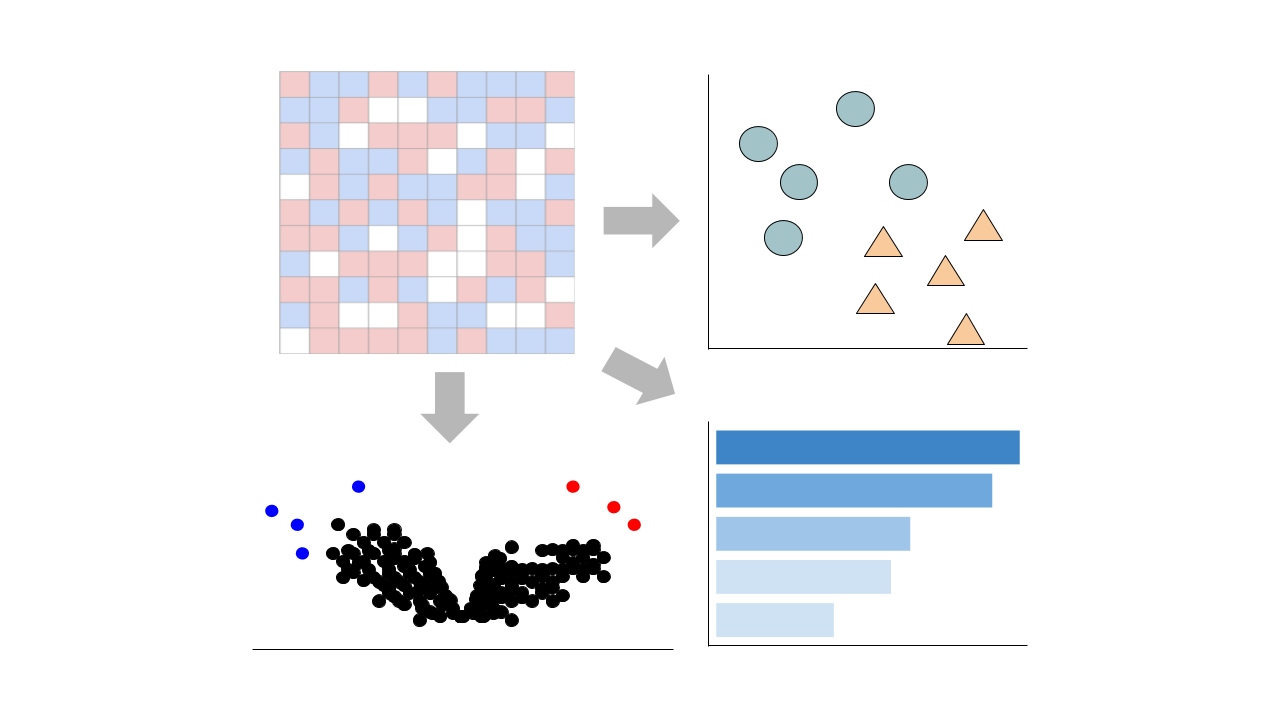Submission Date: Jul 19, 2021
Summary: Purpose: Next-generation sequencing (NGS) has revolutionized systems-based analysis of cellular pathways. The objective of this study was to compare transcriptome analysis (RNA-seq) with microarray and quantitative reverse transcriptase polymerase chain reaction (qRT-PCR) for HIV-1-infected and uninfected MDMs and to evaluate the optimal protocol for high-throughput data analysis
Methods: The mRNA profiles of HIV-1-infected and uninfected MDMs were generated by deep sequencing, in triplicate, using Illumina GAIIx. The sequence reads that passed quality filters were analyzed at the transcript isoform level with two methods: Burrows–Wheeler Aligner (BWA) followed by ANOVA (ANOVA) and TopHat followed by Cufflinks. qRT–PCR validation was performed using TaqMan and SYBR Green assays.
Results: Using an optimized data analysis workflow, we mapped about 20 million sequence reads per sample to the human genome and identified 60505 transcripts in the HIV-1-infected or uninfected MDMs. RNA-seq data confirmed stable expression of 15 known housekeeping genes, and 10 of these were validated with qRT–PCR. RNA-seq data had a linear relationship with qRT–PCR for more than four orders of magnitude and a goodness of fit (R2) of 0.8953. Approximately 10% of the transcripts showed differential expression between the HIV-1-infected or uninfected MDMs, with a fold change ≥1.5 and p value <0.05. Altered expression of 48 genes was confirmed with qRT–PCR, demonstrating the high degree of sensitivity of the RNA-seq method.
Conclusions: Our study represents the detailed analysis of HIV-1-infected macrophages transcriptomes, with biologic replicates, generated by RNA-seq technology. Our results show that NGS offers a comprehensive and more accurate quantitative and qualitative evaluation of mRNA content within a cell or tissue. We conclude that RNA-seq based transcriptome characterization would expedite genetic network analyses and permit the dissection of complex biologic functions.
GEO Accession ID: GSE180350
PMID: No Pubmed ID
Select conditions below to toggle them from the plot:
| GROUP | CONDITION | SAMPLES |
|---|---|---|
| Monocyte Derived Macrophages |
GSM5461211 GSM5461212 GSM5461213
|
|
|
GSM5461214 GSM5461215 GSM5461216
|
Submission Date: Jul 19, 2021
Summary: Purpose: Next-generation sequencing (NGS) has revolutionized systems-based analysis of cellular pathways. The objective of this study was to compare transcriptome analysis (RNA-seq) with microarray and quantitative reverse transcriptase polymerase chain reaction (qRT-PCR) for HIV-1-infected and uninfected MDMs and to evaluate the optimal protocol for high-throughput data analysis
Methods: The mRNA profiles of HIV-1-infected and uninfected MDMs were generated by deep sequencing, in triplicate, using Illumina GAIIx. The sequence reads that passed quality filters were analyzed at the transcript isoform level with two methods: Burrows–Wheeler Aligner (BWA) followed by ANOVA (ANOVA) and TopHat followed by Cufflinks. qRT–PCR validation was performed using TaqMan and SYBR Green assays.
Results: Using an optimized data analysis workflow, we mapped about 20 million sequence reads per sample to the human genome and identified 60505 transcripts in the HIV-1-infected or uninfected MDMs. RNA-seq data confirmed stable expression of 15 known housekeeping genes, and 10 of these were validated with qRT–PCR. RNA-seq data had a linear relationship with qRT–PCR for more than four orders of magnitude and a goodness of fit (R2) of 0.8953. Approximately 10% of the transcripts showed differential expression between the HIV-1-infected or uninfected MDMs, with a fold change ≥1.5 and p value <0.05. Altered expression of 48 genes was confirmed with qRT–PCR, demonstrating the high degree of sensitivity of the RNA-seq method.
Conclusions: Our study represents the detailed analysis of HIV-1-infected macrophages transcriptomes, with biologic replicates, generated by RNA-seq technology. Our results show that NGS offers a comprehensive and more accurate quantitative and qualitative evaluation of mRNA content within a cell or tissue. We conclude that RNA-seq based transcriptome characterization would expedite genetic network analyses and permit the dissection of complex biologic functions.
GEO Accession ID: GSE180350
PMID: No Pubmed ID
Select conditions:
Control Condition
Perturbation Condition
This pipeline enables you to analyze and visualize your bulk RNA sequencing datasets with an array of downstream analysis and visualization tools. The pipeline includes: PCA analysis, Clustergrammer interactive heatmap, library size analysis, differential gene expression analysis, enrichment analysis, and L1000 small molecule search.
